Do you remember your last experience with antibiotics?
Yikes.
It’s what drove me to research the best natural antibiotics from Mother Nature.
The constant fatigue, the digestion problems, and just knowing how it destroys your gut bacteria and immunity have all developed an antibiotic-phobia in me.

Granted, pharmaceutical antibiotics will destroy most kinds of bacteria (though in recent years this single benefit is in serious decline), and on rare occasions, it’s unavoidable.
But:
The price you have to pay, well, in my eyes, makes it completely not worth it.
What’s that price?
1. Broad-spectrum antibiotics can wipe out many beneficial gut bacteria along with pathogens.
2. Most of your immune army camps out in your gut – so when those friendly microbes get scrambled, your defenses can take a hit.
3. Because of antibiotics overuse, super-bugs have developed, which are resistant to all but the most powerful drugs (whose side effects are often dangerous).
Page Contents
Do Natural Antibiotics Work?
Natural antibiotics have been used for thousands of years, and now clinical research is finally catching up and discovering the ability of some powerful foods and herbs, able to destroy the most virulent bacteria.
From Strep Throat to UTIs and Sinus Infections – you don’t have to look further than your kitchen to find the most powerful natural antibiotics – waiting for you to use them, without making you sicker later (but don’t replace prescribed antibiotics for bacterial infections).
Some of the antibiotic foods and herbs you’ll find below can be consumed in their original state.
Some gain higher potency when made into tea or tinctures or extracts. Others are best used as essential oils or made into vegetarian, non-GMO capsules.
In this post, you’ll find the complete list of natural antibiotics, how to and when to use them, and the research to back them.
The Complete List of Natural Antibiotics
1. Oregano Oil
Best for – sore throats, strep. Throat, and upper respiratory diseases (sinus infections, for example), but can be used for any bacterial or viral infection.
Oregano is one of the world’s greatest sources of the powerful phenol component, Thymol. Thymol destroys microbes.
Just recently, the Oregano Oil was found to be significantly better than all of the 18 currently used antibiotics in the treatment of the mighty MRSA staph infections.
One in vivo study showed that a combination of monolaurin and oil of oregano was effective against staph infections in mice (60% survival rate), even slightly more so than vancomycin (50% survival rate), a type of antibiotic.
It’s such an effective antibiotic that some poultry farms use it to reduce the use of antibiotics in animals.
How to Use Oregano Oil
First, it’s important not to confuse the Oil of Oregano with the common oregano that is used as a spice for cooking.
Common oregano is typically Origanum Marjoram, while the Oil of Oregano is derived from Origanum Vulgare.
When you buy oregano oil, make sure that the oil is derived from the proper potent oregano plant and that the carvacrol concentration is at least 70%.
An adult can take up to 8 drops mixed in a glass of water, 3 times a day. It is very potent, so do not try to take it without water.
What I use – Source Naturals Wellness Oil of Oregano
See many more amazing uses of Oregano Oil!
2. Manuka Honey
Best For – cuts, scrapes, sore throat, respiratory system diseases, bacterial infections.
Manuka honey, made from the Manuka Tree in New Zealand, is much more than a great natural sweetener.
Manuka Honey has strong antimicrobial activity against multidrug-resistant pathogens (Expert).
Used topically, it can disinfect minor cuts and scrapes and relieve burns by applying directly to the affected area, and can be used as a healing mask for acne-prone skin.
Used internally, it can be used to fight infection and inflammation.
Though studies found that most honey has antibacterial activity, Manuka honey seems to be especially potent due to a compound called methylglyoxal.
Use medical-grade honey for wounds. If taken by mouth, keep amounts modest and avoid in infants.
How to Use Manuka Honey as a Natural Antibiotic
For topical use, apply 3 times a day on the affected area. Internally, it is generally recommended to take 1-2 teaspoons half an hour before meals.
What I use – This is the only Manuka Honey I use. It’s approved by the Unique Manuka Factor Honey Association (UMFHA).
See how to make your own 100% natural sore throat spray (with essential oils, herbs, and honey!)
3. Goldenseal
Best For – upper respiratory infections, digestive infections, UTI.
Goldenseal is one of the five top-selling herbal products in the United States and is one of the most powerful antibiotic herbs.
Goldenseal is complication prevention at its best. It contains the active component berberine, which prevents bacteria from “sticking” to our cell walls.
Bacteria can come to the party, but they can’t get in.
Hailing from the northwest United States, Goldenseal is a potent antibiotic, well-known to help treat sore throats as well as digestive infections that can cause diarrhea.
See the top 3 natural antibiotics for a UTI here
How to Use Goldenseal
Golden Seal dry powder tastes like sand from the beach, but luckily, you can get it in capsule form in an extract, which means you’ll need a few drops.
For a sore throat, a few drops locally can stop it dead in its tracks. If you use the powder form, you can gargle 1/2 tbsp of Goldenseal with a pinch of salt, 3 times a day.
For general use, various types of goldenseal dosing can be used, each taken by mouth three times daily, including:
0.5 to 1 gram tablets or capsules, 0.3 to 1 milliliter of liquid/fluid extract (1:1 in 60% ethanol), 0.5 to 1 gram as a decoction, or 2 to 4 milliliters as a tincture (1:10 in 60% ethanol).
Note: Goldenseal, like its good friend the Echinacea, cannot be taken internally for more than 2 weeks.
What I use– Herb Pharm Goldenseal Extract
4. Echinacea

Best for – any bacterial infection, and great for strep. throat, sinus infections, and upper respiratory system diseases.
Echinacea was recently shown to be one of the best natural antibiotics in a study at the University of Munich in Germany.
Echinacea contains a variety of compounds with antimicrobial properties, including alkylamines, polysaccharides, and flavonoids. These compounds may help to inhibit the growth of bacteria and viruses, and also reduce inflammation.
Echinacea also contains compounds that stimulate the immune system, such as echinacein, which has been shown to increase the production of white blood cells. These white blood cells are important for fighting off infections by destroying harmful microorganisms.
I’ve been using the great Goldenseal-Echinacea combo for years with great success, so I was delighted to find a scientific report that validates Echinacea’s amazing benefits.
How to Use Echinacea
Echinacea is most powerful in tincture form. You can either use it alone or get a tincture combining Goldenseal with Echinacea, like this one.
Note: Do not take Echinacea for more than 2 weeks. After that, it may weaken your immune system, much like pharmaceutical antibiotics.
5. Oregon Grape
Best for – digestive infections, stomach ulcers, GERD, bowel cleanse, psoriasis (topically).
Like Goldenseal, the Oregon Grape contains berberine, which can stop bacteria from adhering to the walls of the intestine and urinary tract.
Oregon Grape can be a great antibiotic alternative for UTIs and digestive tract conditions like infectious diarrhea.
How to Use Oregon Grape
Oregon Grape can be taken via capsules, tablets, or liquid tinctures or you can just make tea from it.
- For tinctures – the typical dosage is 2-4 mL, 3 times per day.
- For capsules – the typical dosage is between 300 and 500 mg, 3 times per day.
- For teas – the typical dosage is 1-2 tsp of dried root or rhizome per cup of hot water. Steep for 10-15 minutes and drink 2-3 times a day.
6. Coconut Oil

Best for – bacterial infections, viral infections, fungi, weight loss, metabolism improvement, skincare, the list goes on and on.
Did you know? Populations that eat a lot of coconuts are among the healthiest people on the planet.
The fat in the Coconut contains a large quantity of lauric acid, a medium-chain triglyceride.
In our body, lauric acid turns into a monoglyceride with antibacterial properties, which can also be found in breast milk.
Both lauric acid and monolaurin can kill harmful pathogens like bacteria, viruses, and fungi.
They have been proven to kill the bacteria Staphylococcus Aureus (a very dangerous pathogen) and the yeast Candida Albicans, a common source of yeast infections.
How to Use Coconut Oil
To get the most benefits from coconut oil, you should only use raw, unprocessed, extra virgin coconut oil.
Internally, you can take as much as 3 tbsp of coconut oil daily, or more. Since coconut oil tastes so great, you can add it to your rice, your soups, or anything as long as you don’t heat it.
Topically, it can be used to relieve sunburns really fast, dry skin caused by anything, mild cuts and scrapes, bug bites relief, and much more.
What I use – This is the only Coconut Oil I use. It’s raw, virgin, unprocessed, and tastes delicious.
7. Garlic
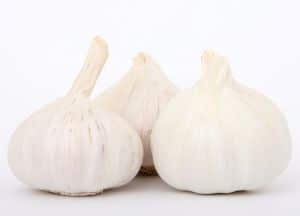
Best for – any bacterial, viral, and fungal infection, UTIs
Garlic is way more than a culinary spice or a surefire way to ruin a hot date.
Garlic’s power and value as a healing agent are unsurpassed and cannot be overstated. No wonder garlic has been used as a natural antibiotic for decades.
One of the active compounds, Allicin, has been shown in studies to kill the super-bacteria MRSA, which is becoming an increasingly larger threat to the human race due to resistance to antibiotics.
How to Use Garlic
Garlic is the most potent when chewed or crushed raw. You can eat up to 2 cloves per day.
If you can’t stand the taste, you can buy it in capsule form, but make sure the active components have not been destroyed in the process.
For ear infections, simply take 2-3 cloves of crushed garlic and mix them with 2 tablespoons of extra virgin olive oil.
Leave to steep for 30 minutes, then strain. Once strained, put a drop or two in each ear every hour for a few days.
Most people report great relief in only a few hours.
For internal use, crush 1 clove of garlic and add it to your meals twice a day.
8. Myrrh
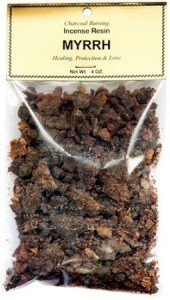
Best for – respiratory system infections, mouth sores, and bacterial infections.
If you’ve heard of frankincense and myrrh, it’s probably thanks to the biblical account of the birth of Jesus.
…and when they had opened their treasures, they presented unto him gifts; gold, and frankincense, and myrrh
-(Matthew 2:11).
Myrrh is a reddish resin that comes from species of the genus Commiphora, which are native to northeast Africa and the adjacent areas of the Arabian Peninsula.
Natural healers have used myrrh for hundreds of years. It is touted for its antiseptic, antibiotic, and antiviral properties.
Myrrh has antibacterial, antifungal, and pain-relieving components and is commonly recommended for bacterial oral infections (such as mouth sores), bronchitis, and sore throat.
How to Use Myrrh
Myrrh can be taken internally (as an extract) and used externally as a gargle or wash for wounds.
Note that Myrrh should only be used during the acute phase of the illness and is not suitable for long-term internal use.
9. Thyme
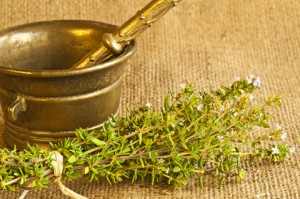
Best for – bacterial acne.
Thyme essential oil is an effective disinfectant and natural preservative.
It’s been used for thousands of years, but clinical studies haven’t confirmed its ability to be a natural antibiotic…except in the case of acne.
Thyme oil (taken internally) was proven to be more effective than Benzoyl Peroxide, without the side effects (burning sensation, skin irritation).
How to Use – The general therapeutic dosage of Thyme tincture is 6 – 18 ml per day.
What I use – this Thyme Tincture.
10. Olive Leaf

Best for – sore throat, ear infections, upper respiratory infections, gout, stomach ulcers, viral infections, and bladder infections.
In the Middle East, olive leaf tea has been used for centuries to treat sore throat, coughs, fevers, high blood pressure, cystitis (bladder infection), gout (foot inflammation), and to improve general health.
In clinical studies, Olive Leaf extract was found to have antimicrobial activity against Campylobacter jejuni, Helicobacter pylori, and Staphylococcus aureus [including methicillin-resistant S. aureus (MRSA)].
How to Use – Olive leaf can be used either as tea or in the form of a tincture (much more concentrated).
What I use – this Olive Leaf Extract (Olea europaea trees).
11. Cabbage

Best for – stomach ulcers, bacterial infections, and bladder infections.
The cabbage was proven to have anti-microbial properties that can kill all kinds of diseases naturally.
The antibiotic properties of cabbage are increased once it has been fermented. So eat your sauerkraut every day.
Also, the RBCS Group indicates cabbage has been found to combat H. Pylori bacteria, which has been identified as a major cause of stomach ulcers.
Cabbage may also be beneficial for preventing bladder infections and obstructive jaundice.
How to Use Cabbage as a Remedy
You can add raw cabbage to your salad or green juice, and you can eat it fermented (even better). Both are delicious.
Here’s how to easily make organic fermented cabbage (natural antibiotic AND pro-biotic!):
12. Horseradish
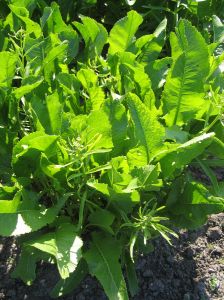
Best for – UTI, sinusitis, sore throat, and upper respiratory infections.
According to NYU Langone Medical Center, Horseradish is proven to have antimicrobial properties.
It’s one of the best antibiotic spices around.
Germany has approved it as supportive therapy for certain infections, such as urinary tract infections, respiratory infections, and sinusitis, and it is regarded as one of the best antibacterial foods.
How to Use Horseradish
This spicy food can be difficult to eat in large quantities, but you can take it in the form of a tincture or powder in capsules.
13. Turmeric
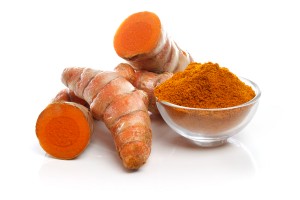
Best for – everything. Seriously.
Turmeric, the bright yellow root, is far more than just a culinary spice.
It is one of the most thoroughly researched plants in the world, and for good reasons.
Its medicinal properties and components (primarily curcumin) have been the subject of over 6400 peer-reviewed and published biomedical studies.
Turmeric was proven to be as effective as 14 different drugs, among them are the “popular” anti-inflammatories aspirin, ibuprofen, sulindac, phenylbutazone, naproxen, indomethacin, diclofenac, dexamethasone, celecoxib, and tamoxifen.
A few studies have shown it to be effective against Bacillus cereus, Bacillus coagulans, Bacillus subtilis, Staphylococcus aureus, Escherichia coli, and Pseudomonas aeruginosa.
How to Use Turmeric
Turmeric root can be bought fresh and added to your green juice, to your soup, rice, potatoes, etc. You can also get organic Turmeric powder.
Another option is to take a high-quality Curcumin supplement.
You can use Turmeric as a topical paste to treat skin infections, acne, and muscle pain.
I simply make a paste by adding water (and some Manuka Honey) and applying it directly to the infected area.
14. Ginger
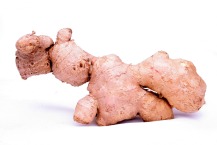
Best for – upper respiratory infections, nausea, gut infections, acid reflux, cancer, gas and bloating
Ginger is a culinary marvel, and its health benefits are stunning.
It’s been shown to be more effective against staph infections than antibiotics, without adverse effects.
Science has found that the compounds in this plant (gingerols) are effective against at least several gram-negative pathogens as well as several pathogens found in the mouth, according to the National Library of Medicine.
Studies suggest that Ginger can kill cancer cells, reduce brain inflammation, and ease or cure gut problems such as ulcers, colitis, and acid reflux.
How to Use Ginger Root
Fresh ginger root can be added to anything from your green juice to any food you cook. You can add a thumb-size piece to your juice.
Alternatively, you can use organic Ginger powder (1 tbsp in water) or take it in the form of a supplement.
15. Lemons & Limes
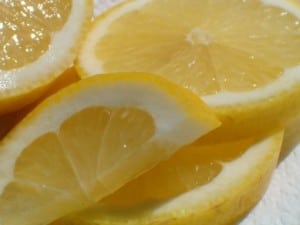
Best for – stomach infections and upper respiratory infections.
Several studies have found the antibacterial properties of lemons.
Data published in the British Journal of Pharmacology and Toxicology reveals:
Lemons contain both coumarin and tetrazine, both effective against many pathogens.
Lime has potent antibacterial activity against multiple drug-resistant E. coli.
How to Use Lemons and Limes
Gargling lemon juice whenever I feel a sore throat coming – stops it dead in its tracks. Use lemons and limes raw only to get the benefits. You can squeeze up to 3 lemons and drink them to treat colds, the flu, sinusitis, or any upper respiratory problem.
I use them inside my DIY vitamin C recipe!
The Strongest Natural Antibiotic
I know it would be much simpler if I just told you which one of these natural antibiotics is the strongest, but unfortunately, it doesn’t work like that.
We are different.
What works for one person may not work as well for another. You’ll have to try a few of them and see which one works best for you.
For me, the most effective natural antibiotic is Oregano oil. I use it all the time.
Now that you have your complete list of natural antibiotics, you can safely treat your bacterial infections with the help of nature’s pharmacy – without side effects, without harming your gut microflora, and without spending so much money on antibiotics.
But:
Before you use any of these top natural antibiotics, please consult your doctor to make sure they are safe for you, especially if you take any medication.
What about you? Have you ever tried one of these natural antibiotics? Which one works best in your experience?
To your health and happiness,
Meital

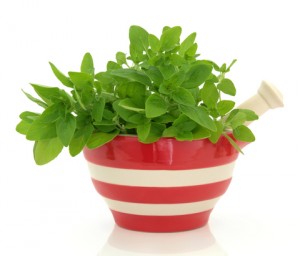
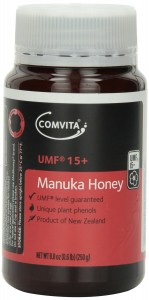

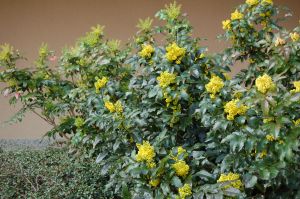
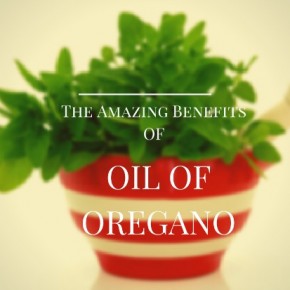


Yes, Oregano oil is very effective. I am a nurse and didn’t believe it at first until I saw my grandson’s burn disappear in two hours after my daughter applied this oil. I chopped oregano plants and made a concoction with vodka, sugar, and lemon juice. I keep a jar of this in case I get some cold symptoms or any first sign of infection like flu or covid.
Maria,
You can use the bar at the top of the site, or here’s the sign up page: https://natural-alternative-therapies.com/sign-up/
Thanks for joining us:)
HOW CAN I SUBSCRIBE TO YOUR SITE
Gary,
The natural antibiotics listed here will not destroy your gut natural bacteria.
Great article. Have a question on antimicrobial botanicals. Will they destroy my well cultivated intestinal biome? mine would be from cultured dairy products.
Hi,
Coconut oil is not only good as an antibiotic but also good when it comes to skincare. And I am using oregano leaves when treating cuts or wounds, I don’t know if this has been proven by science, but personally, oregano leaves are effective.
Charlie,
Thanks for sharing your experience with us. If this ever happens again, I would also recommend trying activated charcoal, which works amazingly fast for tooth infections. You can see why and how to use it here: https://natural-alternative-therapies.com/activated-charcoal-uses/
Olive leaf extract capsules 4 every 4 hours while awake then 8 before bed with lots of water cleared up my tooth abscess in 24 hrs. I took a low dose after that for a week to make sure all bugs were killed. I was in excruciating pain till the olive leaf kicked in. Thank God for the olive leaf.
Thank you very much for this informative blog I’m so happy to be part thanks
I had a tooth go bad and my health wasn’t up to a root canal or antibiotics at that time. The pain was excruciating. I used goldenseal (eclectic institute, dose as listed), echinacea (eclectic institute organic freeze-dried juice…kick butt stuff; 2 of the one per day stuff the first day and per instructions after that), raw garlic, wild oregano oil (solaray, 2 a day, sometimes opened and put right on the tooth), clove tincture on the tooth hole and orally, and Mt Capra goat milk colostrum (2t a day…it is more powerful than other colostrums I’ve tried). I got the infection under control and stable (adding calcium and mineral supplements to keep the tooth as mineralized as possible) for two whole years without antibiotics. I know you shouldn’t take all that for two years, but I did because the alternative was worse. I woke up one morning with a swollen face so then I took the chemical antibiotics. I could handle the antibiotics and root canal by then and I was good! For me, that mix kicked butt amazingly! Even with my immune system the way it was back then. It was the winning combination. But everybody is different. For me, olive leaf did nothing, for instance. So it’s all trial and error
Propolis is an awesome antibiotic. Have been using it for years. My kids were raised on it along with Goldenseal and Echinacea, Ginger, Olive Leaf and several others.
Anhanette,
Thank you so much!:)
Wow! I feel like I need to print and laminate this post!! Thanks for linking up to Wellness Wednesday so I could read it! I’ll be sharing it on my blog tomorrow for my WW monthly features.
Thank U for sharing, its Great.., Now I can choos my natural medicine
I just used garlic, raw honey, Echinacea, lemon, and ginger to get over a nasty cold that I got 2 days before an audition for a community theater play. I had the 2 days off work, so I made myself eat crushed garlic with raw honey 2-3x per day, and then wrapped up in a blanket and drank hot Echinacea tea with ginger, lemon, and more honey all day for 2 days (in between brushing up my monologue). I will say that eating garlic first thing in the morning on an empty stomach made me feel slightly ill, but I was chasing it with ginger tea, so that worked out alright. I can confidently say that I wouldn’t have done any better in the audition had I been well AND got called back.
I am SO thankful you linked up today! I just found you, and what a wonderful resource! I cannot thank you enough for sharing your knowledge and wisdom. I have been in a siege of illness since December 30th, which has been worsened due to the extended length of time I had to be on antibiotics. I am going to pray and seek God’s will concerning which item to order based on your advice. THANK YOU again so very much! God bless you.